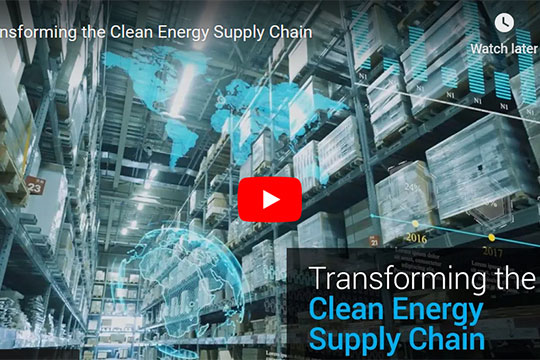Sustainable Mobility Matters—Winter 2023
This quarterly newsletter highlights recent projects, partnerships, and publications related to NREL's sustainable mobility research.
Subscribe to receive this newsletter via email.
Full Speed Ahead: Transportation Decarbonization Efforts Gain Undeniable Momentum
Electric vehicle (EV) sales in the United States have almost doubled every year for the past 3 years. The market share of new EV sales in 2022 alone climbed to a record of about 6%, up from just under 3% in 2021 and 1.7% in 2020.

In support of this flourishing EV expansion across the country, the U.S. Department of Energy's (DOE's) Joint Office of Energy and Transportation—with significant support from NREL—is working to deploy zero-emission transit and school buses, as well as associated fueling infrastructure, as part of a comprehensive, nationwide, EV fast-charging network.
These realities alone point to the rapid acceleration of transportation decarbonization efforts in the last few years, but the evidence doesn't end there.
Indeed, while on assignment to DOE, an NREL researcher coauthored a landmark U.S. National Blueprint for Transportation Decarbonization that lays out a strategy to build on this momentum and get the country to zero-carbon transportation by midcentury while providing equitable, affordable, and accessible options for moving people and goods.
NREL research is also opening doors for biofuels that could replace petroleum-derived fuel, including sustainable aviation fuel made from record seaweed blooms in the Caribbean, and breakthrough battery designs that will take us into a new era of electrified transportation. Meanwhile, calculated improvements in the sustainability and resiliency of the U.S. supply chain will modernize the nation's energy infrastructure, support the transition to renewables, and ensure more reliable access to clean energy for all.
While the path to a carbon-neutral economy isn't altogether clear yet, the gathering power behind our cumulative efforts to accelerate sustainable transportation is undeniable.
Drive on,
Chris Gearhart
Director, NREL's Center for Integrated Mobility Sciences

NREL Coauthors Landmark National Blueprint for Transportation Decarbonization
The federal government has released its first-ever coordinated strategy to decarbonize the U.S. transportation sector—and an NREL researcher served as a lead author for the report while on assignment to DOE. Called The U.S. National Blueprint for Transportation Decarbonization, the landmark strategy was released jointly by the U.S. departments of Energy, Transportation, and Housing and Urban Development, and the Environmental Protection Agency. It charts a path to net-zero-carbon emissions from U.S. transportation by 2050.
Research Forges Environmental, Economic, and Energy Justice Gains for U.S. Manufacturing
Goals to shift to a net-zero-carbon-emissions economy in the next few decades will demand rapid and exponential deployment of clean energy technologies that are made and transported through sustainable supply chains. DOE and NREL researchers are working to make sure that the country's manufacturers have the materials, components, infrastructure, and other resources needed to meet emissions reduction targets and make the production of these technologies as clean as their operation.
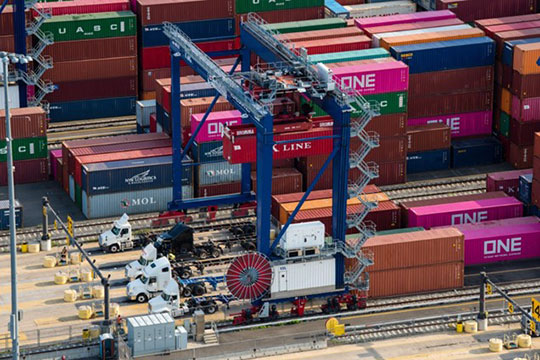
How a U.S. Port Could Electrify Its Drayage Trucks
Ports are some of the transportation sector's heaviest industrial polluters. But analysis at the Port of New York and New Jersey showed a promising opportunity to reduce the port's carbon emissions: electrifying some of the port's drayage trucks, which haul cargo from ships to warehouses. The report determined the vehicle energy storage and charging power levels that would be needed to transition diesel-fueled drayage trucks to electric battery-powered alternatives.
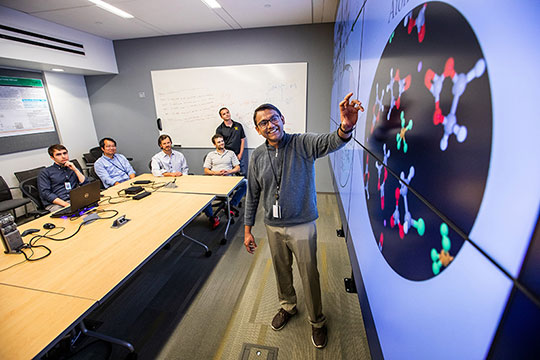
Powering the Future: NREL Research Finds Opportunities for Breakthrough Battery Designs
In the 200 years since its invention, the extraordinary battery has undergone significant evolutions to meet modern applications. In the transition to a more electrified society, batteries will play an essential role in helping store energy from renewable sources to supply electricity for buildings, transportation, and grid applications. Breakthrough battery research at NREL continues to push battery boundaries with materials development, thermal management, diagnostics, and modeling.
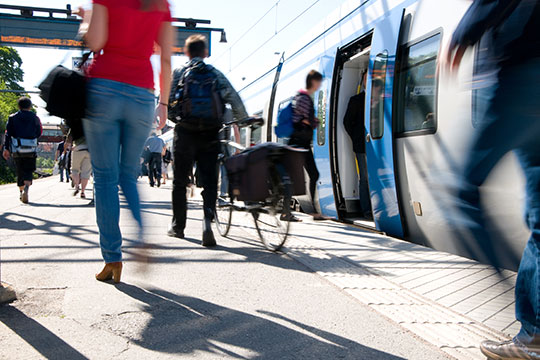
New Transit-Focused Data Archive Supports Travel Behavior Research
Transit agencies across the country conduct passenger studies and surveys to better understand ridership trends. The data from many of these studies are now housed in the transit passenger data section of NREL's Transportation Secure Data Center. This real-world data resource enables planners and researchers to evaluate transit usage trends, how well a transit system meets the needs of disadvantaged communities, and other critical aspects of transit operations.

Scientists Aim To Turn Record Seaweed Blooms Into Jet Fuel and Batteries
NREL researchers are helping develop and analyze a process for turning record seaweed blooms in the Caribbean into sustainable aviation fuel and graphite. Blended with 75% wood waste, regionally sourced sargassum could yield an estimated 78 million gallons of sustainable aviation fuel and 61,000 tons of graphite annually. If successful, the project could empower a region already impacted by climate change and often underrepresented in economic development.

Electric Aviation Is Arriving, and Cybersecurity Is High Priority
Airport cybersecurity is becoming even more important with the adoption of electric aircraft. A new NREL report assesses potential cyber needs for electrifying aviation infrastructure and how key stakeholders like air companies, utilities, equipment suppliers, and regulators may implement a cybersecurity approach. Much is still unknown about designing systems for electric aircraft, but the authors identified common approaches to secure infrastructure early in the design and procurement process.
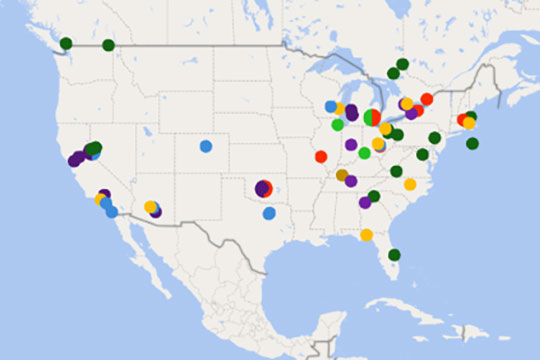
Collaborative Database Maps Lithium-Ion Supply Chain Landscape
Developing a secure supply chain—from material extraction to manufacturing battery cells and packs—is essential for a competitive edge in lithium-ion domestic and global markets. NREL's Lithium-Ion Battery Supply Chain Database is a comprehensive directory of every company in North America involved in building lithium-ion batteries. For each facility, the database lists key information about the company, location, workforce, and products and services with advanced search and mapping capabilities to visualize the evolving market.
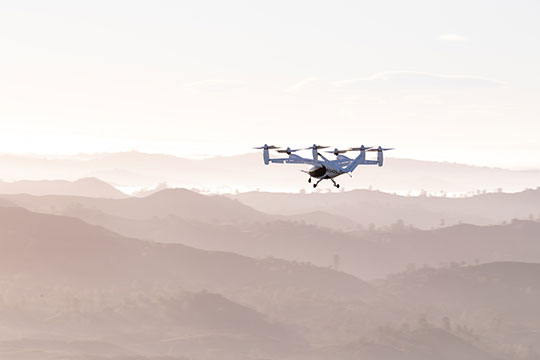
Air Force Accelerator Adds NREL for Sustainable Aviation Expertise
NREL is enthusiastically supporting development of electric vertical take-off and landing technologies, and a new collaboration with the U.S. Air Force is taking that research to new heights. NREL is contributing to the Air Force's AFWERX division, which leverages research laboratories and expertise throughout the United States to accelerate commercial progress in technologies that could have long-term military applications.
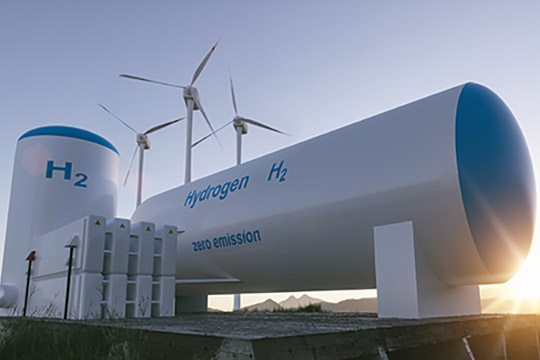
NREL Model Simplifies Hydrogen Production Analysis
The ability to analyze economic performance of the various hydrogen production pathways is critical as industries seek to transition to renewable energy. This ability—techno-economic analysis—estimates capital costs, operating costs, and revenue based on technical and financial variables. The new Hydrogen Analysis Lite Production model provides a high-level techno-economic view of select hydrogen production technologies. The model is part of a suite of actively developed hydrogen analysis tools.

Livewire Data Platform Expands Access, Visibility of Transportation Project Data Sets
The Livewire Data Platform provides transportation researchers with a unified platform to connect and find data sets to enhance their own projects. Livewire allows researchers, industry, and academic partners to increase the visibility of their projects within the research community, securely share and preserve data, and leverage data sets from other projects. The platform accommodates a range of data sets, including behavioral, experimental, model, analytical, and raw data at the vehicle, traveler, and system levels.
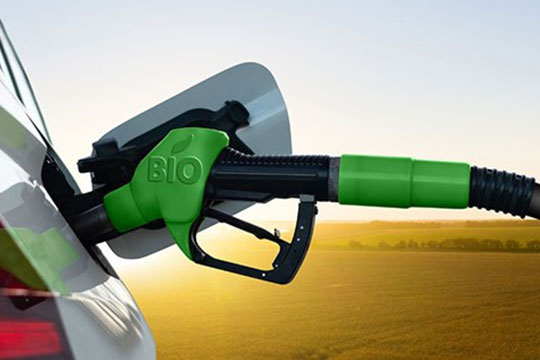
Techno-Economic Analysis Uncovers 10 Biofuels That Could Replace Petroleum
Biofuels are held to a high standard: To be viable, they need to be high performing, efficient, and cost-effective, in addition to clean and renewable. With funding from the Co-Optimization of Fuels & Engines initiative, NREL researchers joined forces with three national laboratories to perform world-class techno-economic analysis on potential new fuel sources—and discovered a slate of biofuels that offer promising alternatives to petroleum-derived fuels.
Get To Know Our Team: Matteo Muratori

A conversation with NREL's Matteo Muratori, group manager of NREL's Transportation Energy Transition Analysis team.
What is your primary research focus at NREL?
My research explores the future of mobility, with a focus on transitioning to sustainable solutions for passenger and freight systems. This involves developing strategic scenarios to explore the role of transportation in long-term energy futures, as well as synergies between transportation and the broader energy system, including electric vehicle charging infrastructure, renewables, and the electricity grid.
In your field of research, what one mobility challenge do we need to prioritize in the next 5 years?
Today, transportation is the largest source of U.S. greenhouse gas emissions, contributing to the climate crisis that is worsening the quality of life for people around the world. But today, we also have a clear vision for a carbon-free transportation future, as detailed in the U.S. National Blueprint for Transportation Decarbonization. As coauthor of this seminal plan and father to two young children, I recognize that the time is now to accelerate the transition to electric vehicles and truly sustainable fuels.
Why does sustainable mobility matter?
Transportation costs are the second largest annual household expense; for the poorest Americans, the financial burden is disproportionately high. A well-planned transition to a decarbonized transportation system can address these and other inequities while providing clean, affordable, accessible options for moving people and goods that improve quality of life for all.
Must Reads
Estimating Charging Needs for Electric Semi-Trailer Trucks
With the market for battery-electric semi-trailers still in its infancy, how can we plan for the charging requirements of an all-electric trucking industry? Leveraging hundreds of millions of miles of trucking telematics data, NREL researchers estimated the charging behaviors and infrastructure requirements for local, regional, and long-haul trucking, and what might be supported by the infrastructure we already have in place. Check out their insights, including how they might shift as technologies improve, in their Renewable and Sustainable Energy Transition article.
Public Charging Station Utilization in the U.S. Market
The national network of EV chargers is rapidly expanding, but utilization trends—a key driver of station economics—are not well understood. A recent study published in Transportation Research Part D: Transport and Environment analyzes the past 2.5 years of charging data from thousands of public Level 2 and DC fast-charging stations around the country, uncovering how factors like local EV adoption, network size, and charging power all play a key role in how EV charging stations are used.
E85 Fueling Infrastructure Trends: A Decade in Review
Ethanol has a long history as a renewable biofuel in the United States, with decades of use as a low-level blend in gasoline. Due to legislation throughout the 2000s, high-level ethanol blends, including E85 (containing up to 83% ethanol), have grown in availability and use. Using data from DOE's Alternative Fuels Data Center and other industry stakeholders, NREL has published a report benchmarking the past decade of E85 fuel trends and looking ahead at the future of alternative fuels.
Literature Review Highlights the Possibilities—and Challenges—of Hydrogen Blending in Natural Gas Infrastructure
As an energy carrier that can be produced from a variety of low-carbon sources, hydrogen is poised to play an important role in reducing emissions in difficult-to-decarbonize sectors. Developing the infrastructure necessary to deliver hydrogen for these applications, however, remains a key challenge. Blending hydrogen into existing natural gas pipelines could prove to be a promising, cost-effective pathway to solve this issue. Explore the material, economic, and operational factors that must be considered for hydrogen blending in the state-of-technology review coauthored by NREL researchers.
Did You Know?
NREL showcased its transportation and mobility research at the 102nd Annual Meeting of the Transportation Research Board (TRB), Jan. 8–12, 2023. TRB presentations by NREL researchers focused on transportation decarbonization, accessible and equitable mobility, sustainable aviation, autonomous vehicles, electric vehicle infrastructure, transit and freight modeling, transportation data, and more. TRB's annual meeting is among the largest gatherings of transportation professionals from around the world.
In the News
Electric Cars Won't Just Solve Tailpipe Emissions—They May Even Strengthen the U.S.
Power Grid, Experts Say
Business Insider interviews Andrew Meintz
When EVs are parked, their batteries can collectively become an asset to the grid through vehicle-to-grid technology. Future vehicles could use bidirectional chargers to absorb energy when it's plentiful and release it back to the grid as needed, helping utilities manage heat waves and other spikes in demand.
Two Colorado Businesses To Use Grant Money for EV Batteries
KDVR FOX 31 interviews Donal Finegan
NREL researchers are working to understand the risks associated with potential alternative EV battery materials to help EV manufacturers design safe systems for these batteries.
Share

